Birds are some of the most beautiful animals in the world and also one of the most vulnerable. These majestic creatures are often indicator species and alert humans of the changes in the environment. Unfortunately, human activity has severely impacted the native habitat of countless birds around the world and many are on the brink of extinction. In fact, two of the rare birds on this list are extinct in the wild and only captive individuals exist. While humans have continued to threaten birds, there are several conservation programs currently in place to protect most of the birds on this list. There are also breeding programs underway, which aim to eventually reintroduce several of these species back into the wild. Hopefully, highlighting these rare birds will help fuel stronger conservation efforts for them and all of the world’s remaining bird species.
Spix’s Macaw
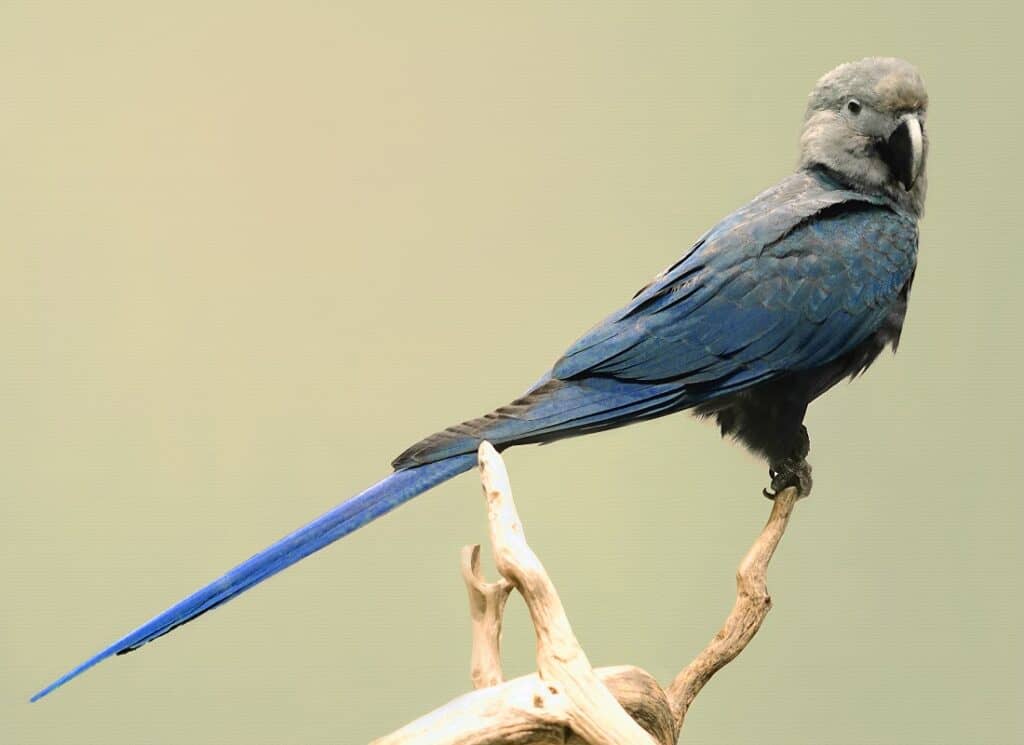
Estimated Population (Total Wild and In Captivity Numbers): about 180
Location: Pernambuco and Bahia, Brazil; now only in captivity
Current Conservation Status: Extinct in the Wild (EW)
Scientific Name: Cyanopsitta spixii
The Spix’s Macaw, made famous by the animated film Rio (2011), has been declared extinct in the wild, but there are several in captive breeding programs as well as a few in private ownership. Before it went extinct, the Spix’s Macaw inhabited Pernambuco and Bahia, Brazil. Among all the negative news coming out of 2020 is some good news; in early March, conservationists announced that 52 Spix’s Macaw parrots were getting ready to be reintroduced to the wild. Currently, there are about 180 healthy Spix’s Macaw parrots in the captive breeding program.
Madagascar Pochard
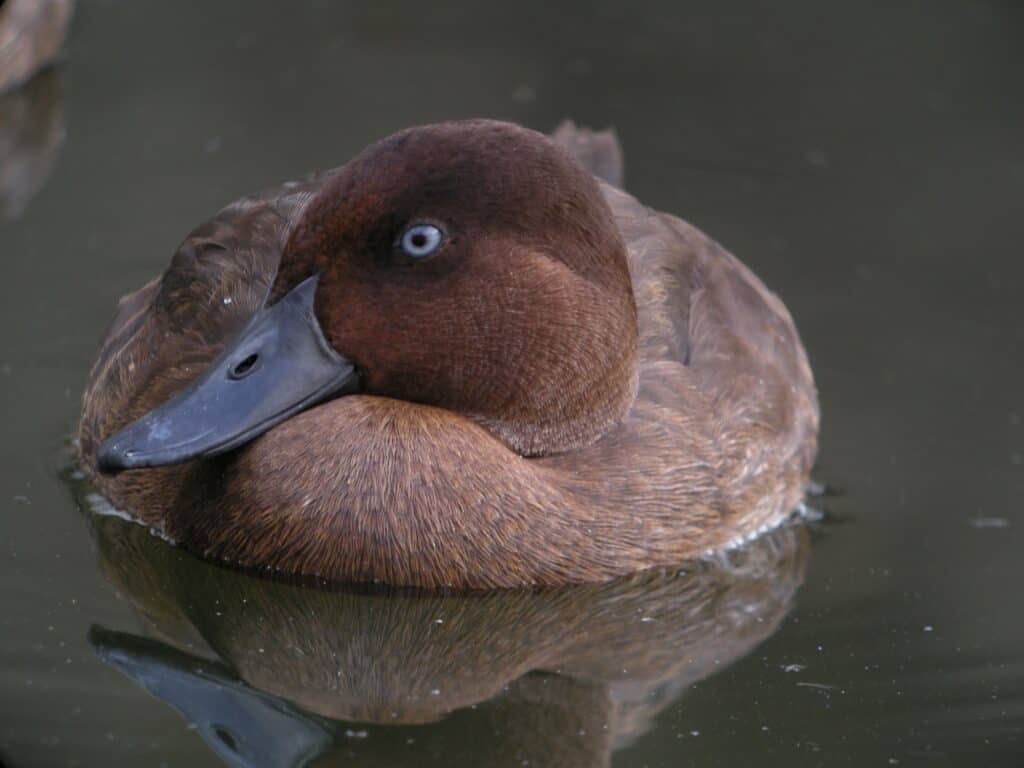
Estimated Population (Total Wild and In Captivity Numbers): fewer than 150
Location: Wetlands of Madagascar
Current Conservation Status: Critically Endangered (CR)
Scientific Name: Aythya innotata
Of all the rare birds on this list, the Madagascar Pochard, an extremely rare diving duck, has made a great comeback in the last few years due to successful conservation efforts. Before its rediscovery in the wild in 2006, the Madagascar Pochard was considered long extinct. After years of research and a succesful breeding program, a set of young adult Pochards were released on Lake Sofia in Madagascar, and about a year later ducklings were spotted. Although this is good news, fewer than a dozen of the released adult Madagascar Pochards live on the lake, while the others are unaccounted for. There are still numerous Madagascar Pochards in captivity to help aid the continuing conservation efforts.
Hawaiian Crow
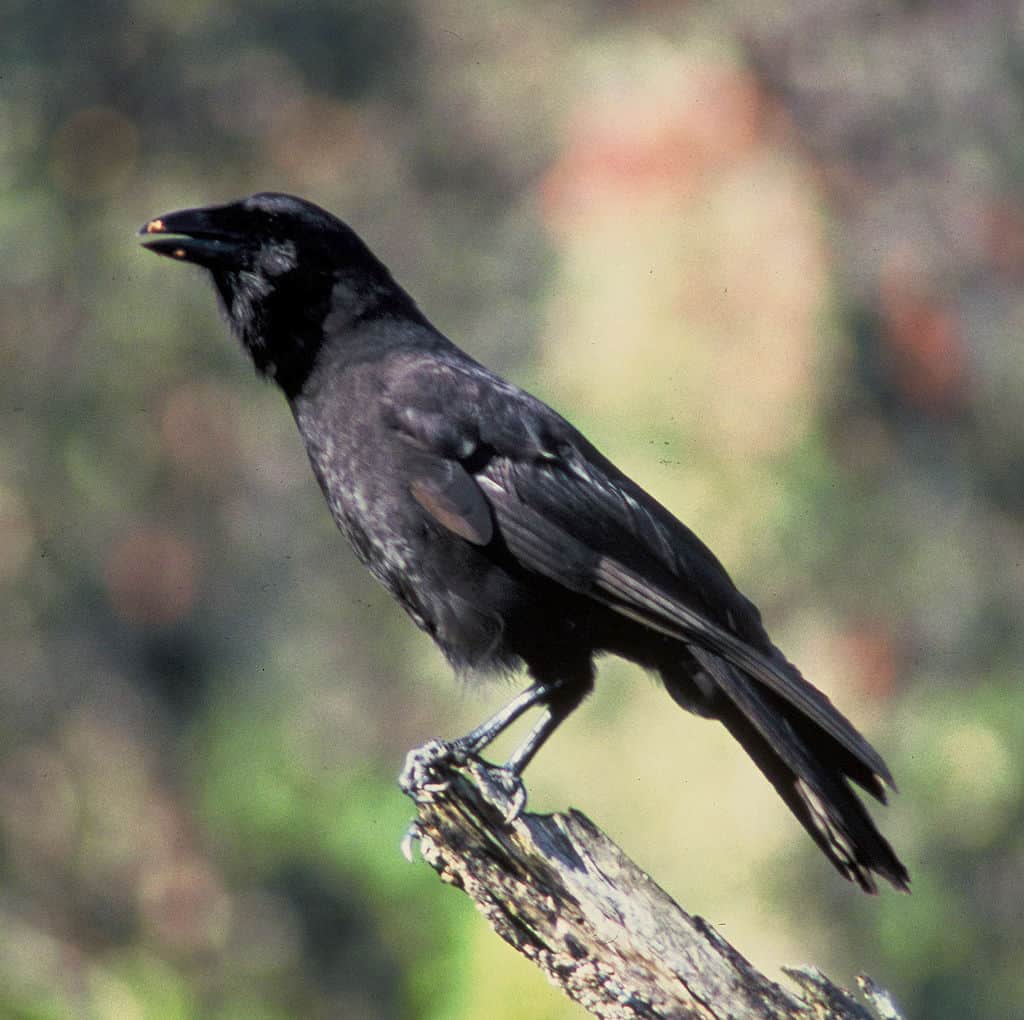
Estimated Population (Total Wild and In Captivity Numbers): about 115
Location: Slopes of Mauna Loa and Hualālai, Big Island, Hawaii
Current Conservation Status: Extinct in the Wild (EW)
Scientific Name: Corvus hawaiiensis
Along with the Spix’s Macaw, the Hawaiian Crow, called ʻAlalā by locals, is another rare bird that is extinct in the wild. Also like the Spix’s Macaw, there has been a strong effort to conserve the Hawaiian Crow and a breeding pair was reintroduced to its native habitat in 2019. While the pair did make a nest and lay eggs, they never hatched, but laying infertile eggs is not uncommon for Hawaiian Crows. In addition to this unsuccessful hatching, breeding Hawaiian Crows in captivity has been difficult due to inbreeding the small remaining population.
Cebu Flowerpecker
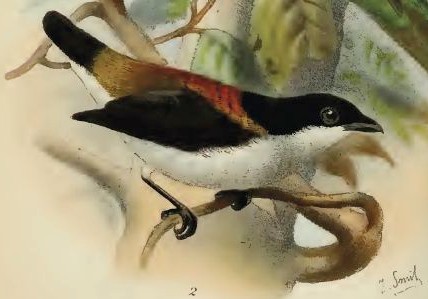
Estimated Population (Total Wild and In Captivity Numbers): fewer than 105
Location: Cebu Island, Philippines
Current Conservation Status: Critically Endangered (CR)
Scientific Name: Dicaeum quadricolor
As its name suggests, the Cebu Flowerpecker is native to Cebu Island in the Philippines. Researchers thought that the Cebu Flowerpecker went extinct in the early 20th century because of extensive habitat clearance. However, the Flowerpecker was rediscovered in 1992 in a small limestone forest in the Central Cebu Protected Landscape. Not much is known about the Cebu Flowerpecker despite more recent interest in trying to protect the bird. It is estimated that there are fewer than 105 Cebu Flowerpeckers left in the wild.
New Caledonian Owlet-Nightjar
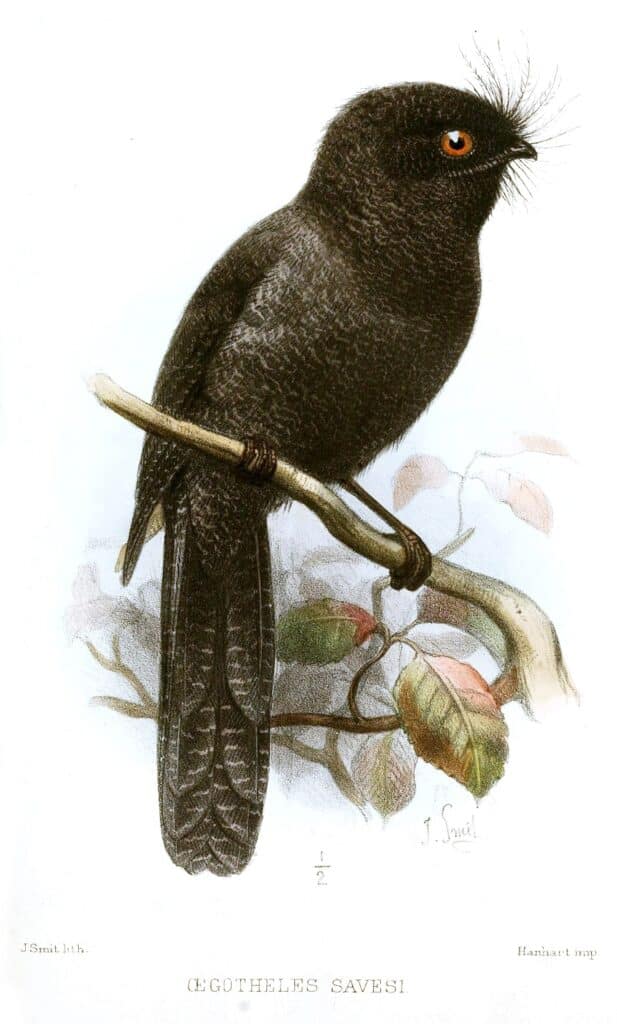
Estimated Population (Total Wild and In Captivity Numbers): fewer than 50
Location: Maleluca Savanna and Humid Forests of New Caledonia
Current Conservation Status: Critically Endangered (CR)
Scientific Name: Aegotheles savesi
Although the New Caledonian Owlet-Nightjar is on the bottom half of this list, it is the most mysterious of the world’s rarest birds. Only two specimens in 1880 were collected and there were a handful of sightings in 1915. The most recently that the New Caledonian Owlet-Nightjar was seen was in 1998. While there haven’t been any recent observations, researchers believe that the New Caledonian Owlet-Nightjar still exists in small numbers, fewer than 50 individuals. Unfortunately, no conservation programs have been established because the New Caledonian Owlet-Nightjar is so hard to find.
Imperial Amazon
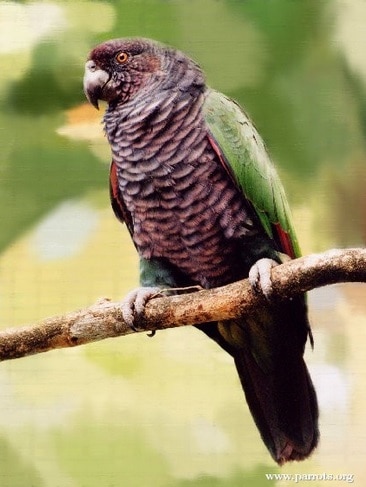
Estimated Population (Total Wild and In Captivity Numbers): fewer than 50
Location: Island of Dominica
Current Conservation Status: Critically Endangered (CR)
Scientific Name: Amazona imperialis
The Imperial Amazon, locally known as the Sisserou, is found only on the Island of Dominica in the Caribbean. At one point there were a couple hundred birds on the island, but following Hurricane Maria in 2017, the Imperial Amazon population has plummeted. It is estimated that there are fewer than 50 individuals and very few birds have actually been observed since the hurricane. In addition to the frequent hurricanes that hit Dominica, the Imperial Amazon is threatened by habitat loss. While the area that the Imperial Amazon lives in is protected, the nearby areas are not.
Antioquia Brushfinch

Estimated Population (Total Wild and In Captivity Numbers): fewer than 50
Location: Northern Antioquia, Colombia
Current Conservation Status: Critically Endangered (CR)
Scientific Name: Atlapetes blancae
The Antioquia Brushfinch is another bird on this list that was thought to be extinct for many years before it was recently rediscovered. In 2018, a Colombian argonomist (an expert in the science of soil management and crop production) of San Pedro de los Milagros noticed this bird on his way to Sunday mass. Since then, researchers have observed four populations of the Antioquia Brushfinch, with fewer than 50 individuals between them. More research is needed to determine whether or not the Antioquia Brushfinch population is currently stable.
Blue-eyed Ground-Dove
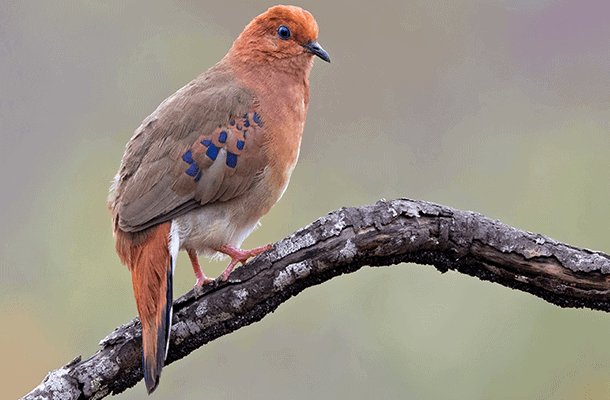
Estimated Population (Total Wild and In Captivity Numbers): fewer than 20
Location: Cerrado Region of Brazil
Current Conservation Status: Critically Endangered (CR)
Scientific Name: Columbina cyanopis
The Blue-eyed Ground-Dove is yet another critically endangered and rare bird from Brazil. Until its rediscovery in 2015, researchers thought the Blue-eyed Ground-Dove had gone extinct as it had not been since 1941. Ornithologist Rafael Bessa heard a mysterious bird call, recorded it and played it back, which drew out a Blue-eyed Ground-Dove. So far, three-distinct groups of Blue-eyed Ground-Doves in a relatively small area have been observed.
Stresemann’s Bristlefront
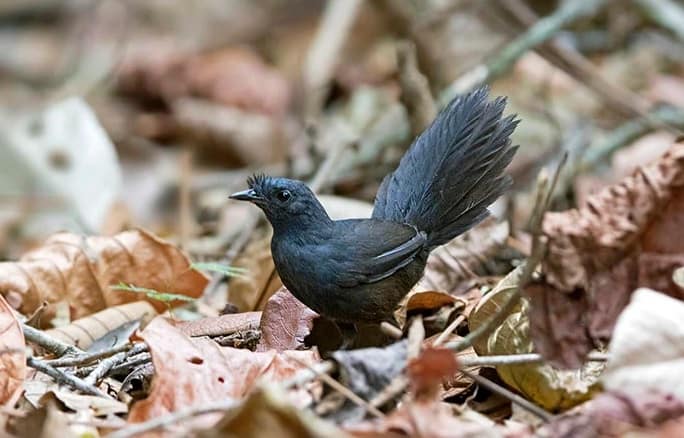
Estimated Population (Total Wild and In Captivity Numbers): One known individual
Location: Mata do Passarinho Preserve, Atlantic Forest, Brazil
Current Conservation Status: Critically Endangered (CR)
Scientific Name: Merulaxis streseman
Stresemann’s Bristlefront is the second rarest bird with only one known individual observed in the wild in the last few years. After a few years of searching, in 2018 researchers finally spotted a female, giving them hope that maybe there were a handful of Stresemann’s Bristlefronts left. Since the Stresemann’s Bristlefront was first noted in the 1830s, the bird has always been elusive and only appeared after several decades. The Stresemann’s Bristlefront’s home, the Mata do Passarinho Preserve, is a protected area and measures have been put in place to encourage the birds to breed and nest.
Bahama Nuthatch
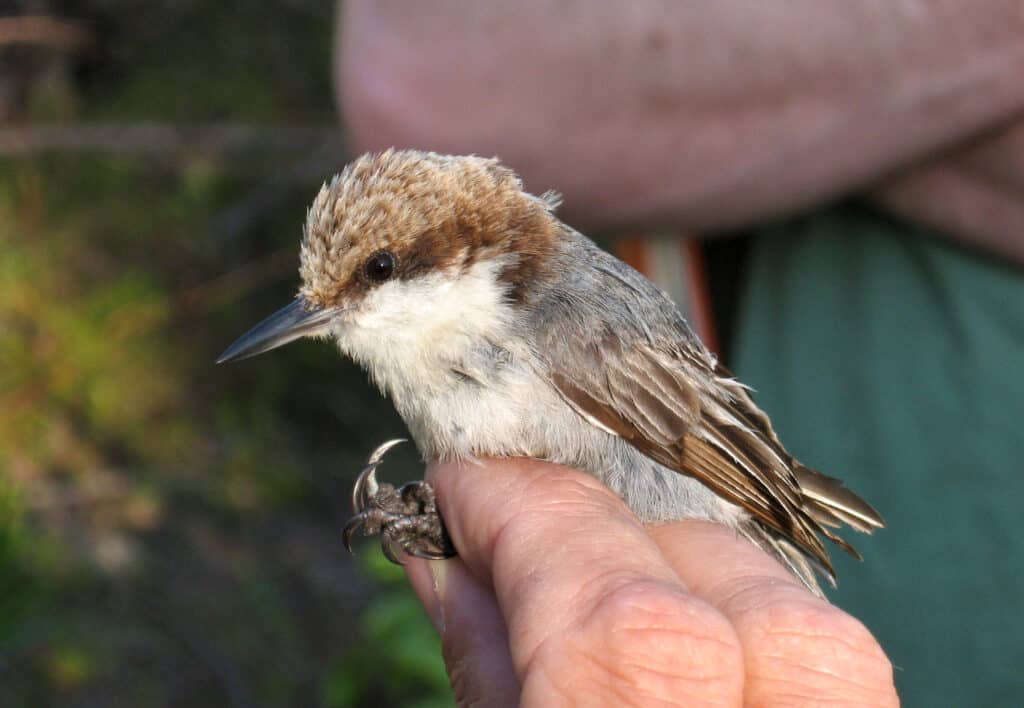
Estimated Population (Total Wild and In Captivity Numbers): None have been observed since 2018
Location: None have been observed since 2018
Current Conservation Status: Critically Endangered (CR), possibly completely extinct
Scientific Name: Sitta pusilla insularis
The Bahama Nuthatch is currently the rarest bird in the world as none have been seen since 2018. That year, after an exhaustive search, researchers were delighted to find a pair of Bahama Nuthatches together and a few more individuals. Prior to this, no Bahama Nuthatch had been seen since 2016 because the frequent hurricanes in the Bahamas – as well as invasive species and tourist developments – have caused extreme habitat loss. Unfortunately, after Hurricane Dorian hit in 2019, much of the ornithology community believe that the Bahama Nuthatch is now extinct. A viable captive breeding program for the Bahama Nuthatch was never established and there are only fewer than two dozen specimens in museum collections around the world.
This article originally appeared on Rarest.org.
More from Rarest.org
The 20 Rarest Cichlids in the World
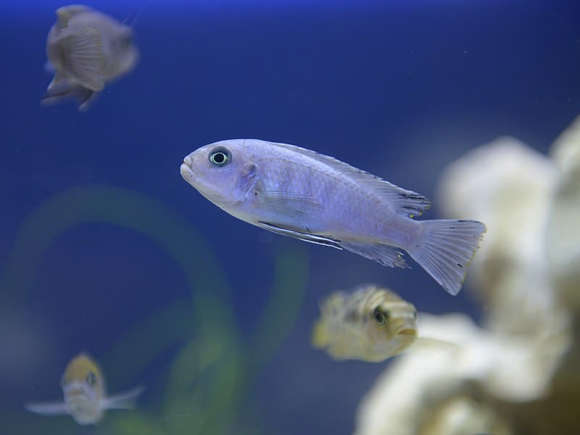
Discover the mesmerizing world of rare cichlids, where vibrant colors and unique behaviors converge in aquatic marvels found in some of the most remote corners of the globe. Dive into this article to uncover the stories behind the rarest Cichlids in the World, showcasing nature’s diversity at its finest. Read More
15 Most Expensive Purebred Dogs Ever

From majestic Tibetan Mastiffs to elegant Salukis, the demand for purebred dogs with exceptional lineage and desirable traits has driven prices to astonishing heights. Let us explore the world of 15 most expensive purebred dogs, delving into the reasons behind their high costs, their remarkable qualities, and the enduring allure that makes them prized possessions for discerning dog enthusiasts worldwide. Read More
10 Rarest Cattle Breeds in the World
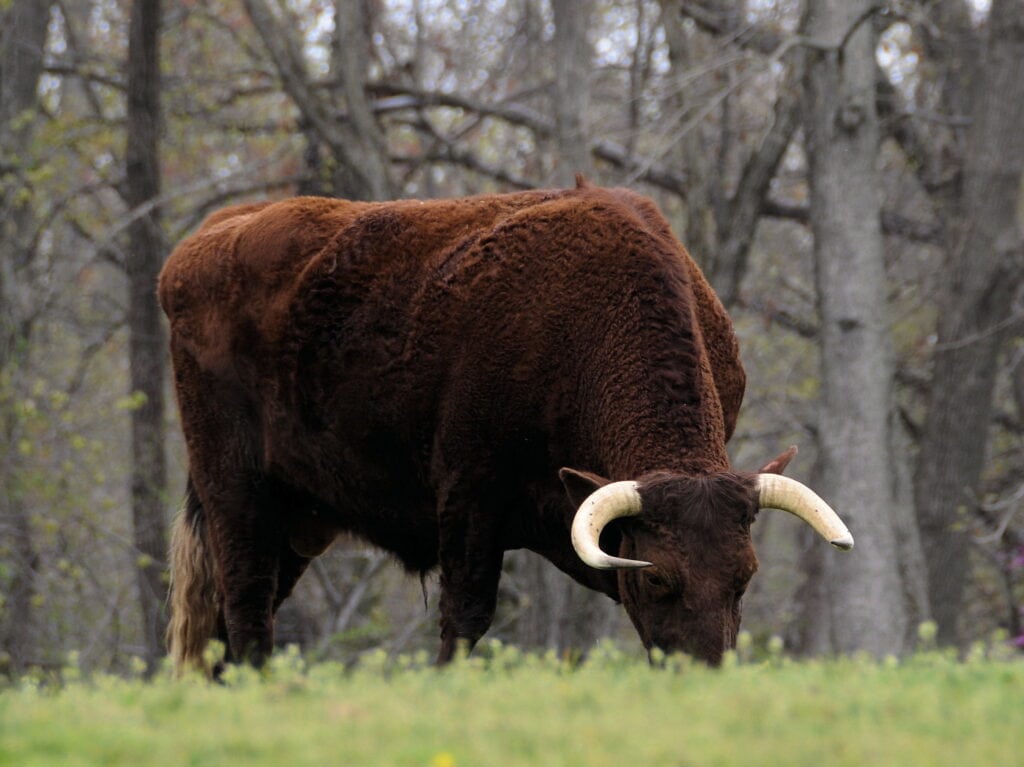
In this article, we delve into the world of cattle breeding to explore the 10 rarest cattle breeds on the planet. From ancient heritage breeds with storied histories to exotic breeds native to remote regions, these cattle represent the epitome of genetic diversity and conservation efforts in the agricultural world. Read More
